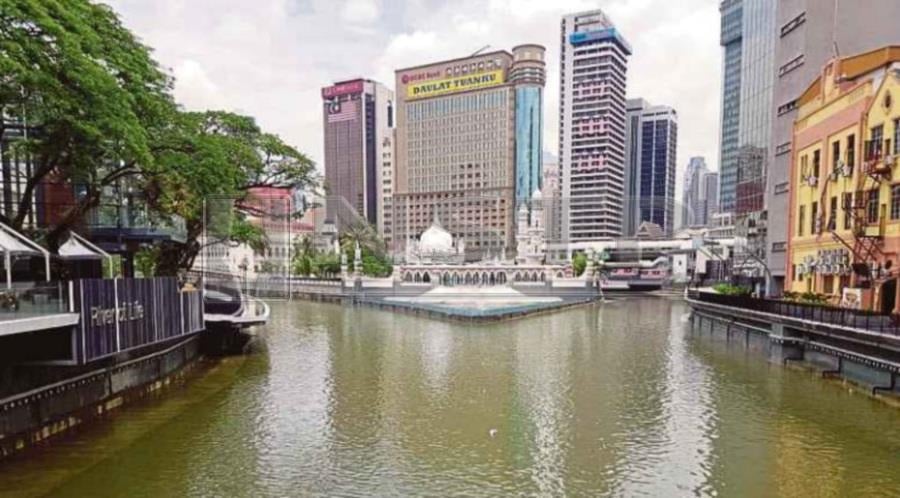Guided tour of Lebuh Ampang

Masjid Jamek at confluence of Gombak (left) and Klang rivers (right) in Kuala Lumpur
Undeniably, it is also an area rich with culture and history, and the best way to discover is through a guided-walking tour.
One of the newest structures built right in Lebuh Ampang is the 4-star hotel Cosmo Hotel Kuala Lumpur.
Interestingly, the two-year old hotel has a City Discovery package (Lebuh Ampang Heritage Trail and KL Forest Eco Park expedition) covering the city’s oldest areas that will not hesitate to delight the curious.
Cosmo Hotel is the first hotelier that is collaborating independently with a team of licensed tourist guides to provide that experience for guests.
“This collaboration is an admirable engagement exercise with professional guides to keep the city’s heritage alive. These guides have passion for all things heritage. Their many years of experience in conducting heritage walking tours for local government agencies and international tourists will lengthen the guests’ stay in the city,” said Jane Rai, an award-winning tourist guide with 29 years of experience.
Rai said the three-hour cultural and historical walk is crafted to allow the hotel guests to discover, immerse and experience up-close the unique cultural attractions of the areas nearby the hotel which are historic.
“The old area has many famous colonial-era landmark buildings clustered in a compact heritage area surrounding the Old Market Square, Masjid India and Lebuh Ampang. All these areas are within walking distance from the hotel,” she told NST Property.
Rai said the suggested starting point for the Lebuh Ampang Heritage Trail is Market Square where a Clock Tower stands. It was built to commemorate the coronation of King George VI in 1937.
“Long time ago the Merdeka Square (Lebuh Pasar Besar) area was a jungle. Yap Ah Loy, an important figure of early Kuala Lumpur, built a wooden house for himself at one end of Merdeka Square. And just by the bank of Klang River, on the east side where Maran Building is located, it was the landing stage for tin miners who were brought in to work in the tin mines by Raja Abdullah. This took place 161 years ago,” she said.
Rai said the idea for the tour to start at Merdeka Square is to give the visitors an insight on how significant the area of Lebuh Ampang is.
An interesting discovery after Merdeka Square is the confluence of two rivers — Gombak and Klang rivers — used as the landing stage for tin mining operation.
Built at the confluence of the two rivers is Masjid Jamek, one of the oldest mosques in KL.
The mosque was designed by British architect A.B. Hubback. It onion-shaped domes, minarets and chhatri spires are well-preserved. The project, which was built at a cost of $33,538.25 Straits dollars, was paid for by Sultan Alauddin Sulaiman Shah, the Malays and the British government.
A staircase adjoining Masjid Jamek was recently unearthed after works for the River of Life project in the area started.
“The confluence of the two rivers was just a wave length at that time. People back then knew that wave length was the burial ground for the Malay community like the Mandaling, Orang Java and Orang Rawa, who were all part of Sumatra. Downstream you found a lot of Chinese because of the tins. The Malays have always been further up. They had their own jetty, their own market, and their own shed of wood carving,” said Rai.
She said Masjid Jamek was there much much later when the British decided to shape the town.
“They rebuilt the town and that is why you find a lot of British colonial buildings in the area like Sultan Abdul Samad Building, the old High Court, and the old Municipal building,” said Rai.
No comments:
Post a Comment